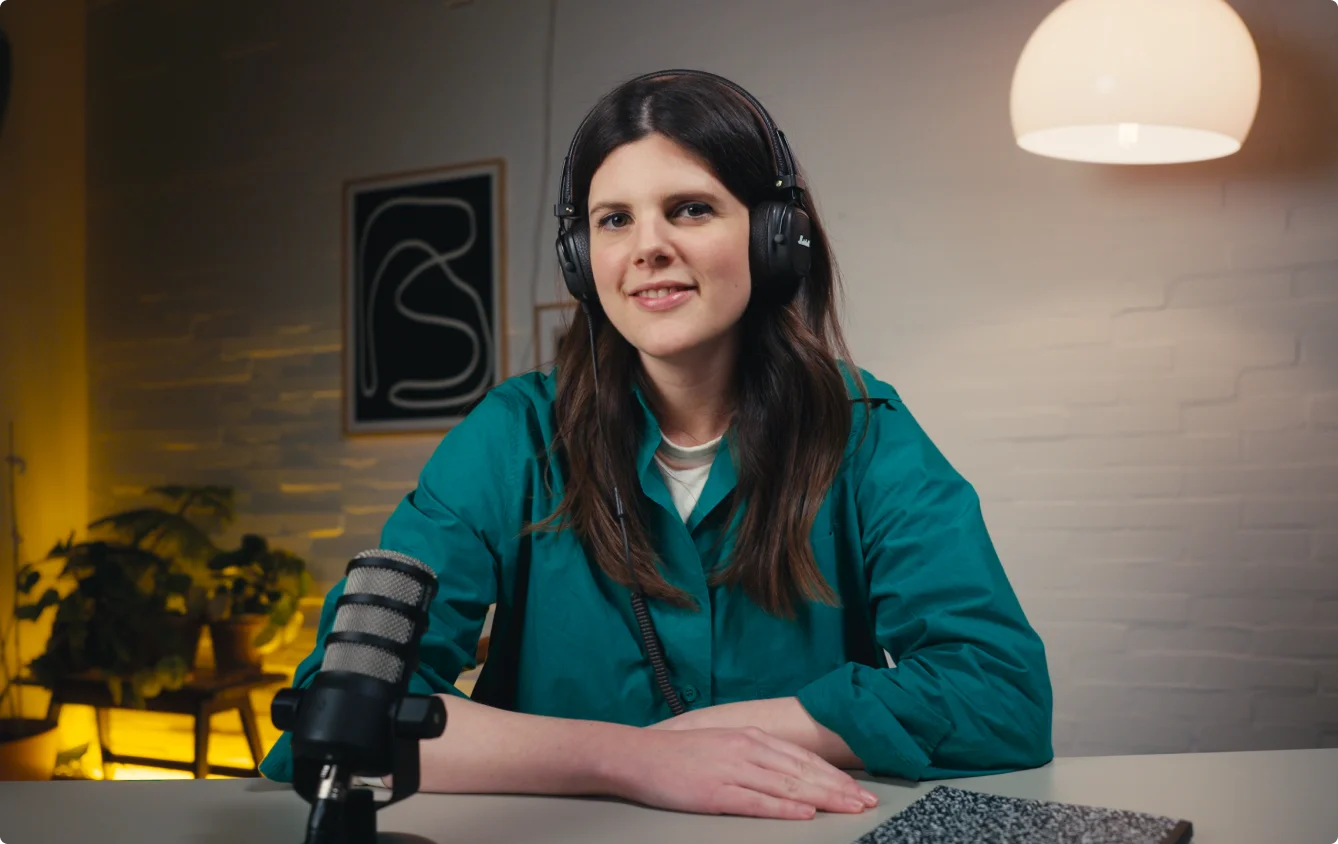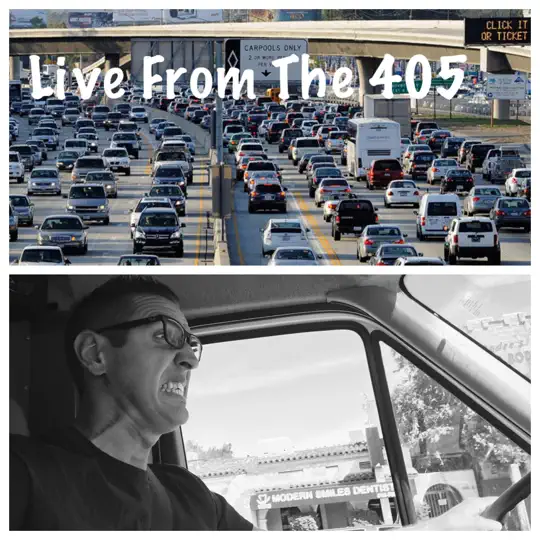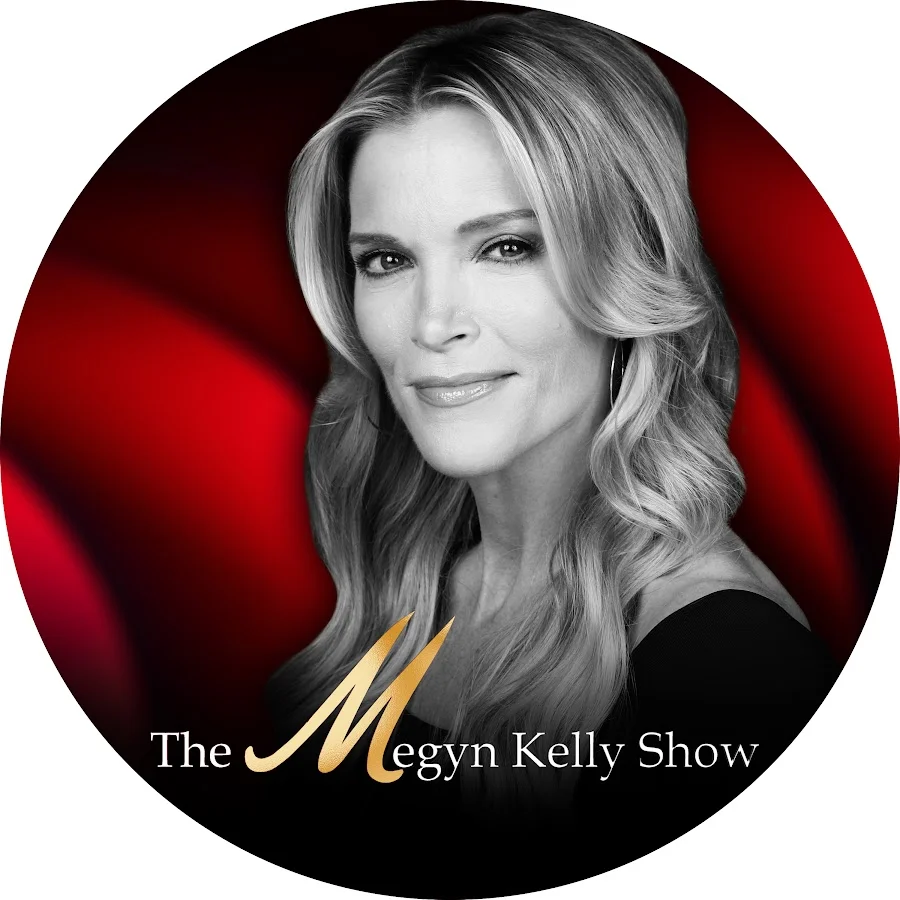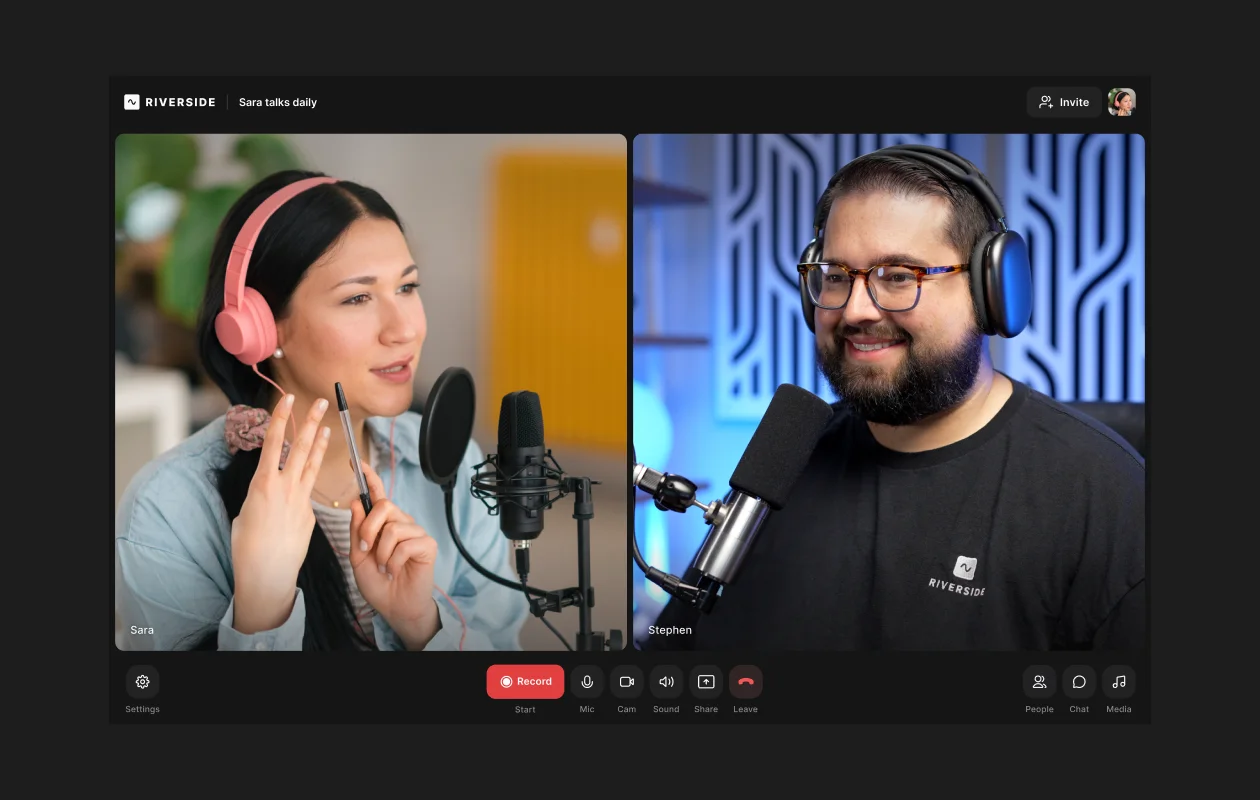Table of contents:
At its core, a podcast is on-demand audio content that listeners can stream or download, usually via an RSS feed.
But as the industry evolved, the definition has too. Many creators now debate what truly counts as a podcast, especially with the rise of video formats.
In this article you’ll learn what a podcast is, why they are so popular, different types and how to start your own
Let's delve into the world of podcasting.
What Is a Podcast?
A podcast is on-demand audio content typically distributed through an RSS feed. This allows people to subscribe and listen on their favorite app, such as Spotify or Apple Podcasts.
The key elements of a podcast are:
- Audio-first content: Typically spoken-word such as interviews or commentary.
- Distributed via RSS feed: Ensures podcasts are accessible across multiple platforms.
- Episodic content: Episodes are released in a series over time.
- On-demand listening: Listeners can listen to episodes at any time.
- Accessible in any podcast app: Not typically tied to one single platform or service.
- MP3 file format: Lightweight and easy to share and download.
What truly defines a podcast?
The industry of podcasting is evolving, with video episodes and new distribution methods that bypass RSS feeds.Today, there’s an ongoing debate about what truly defines a podcast.
Some creators believe they should remain audio-only and RSS-based to be considered a true podcast. Others are more open to the change, welcoming video content and platform exclusives as valid forms of podcasting.
The divide reflects deeper values. Independent podcasters champion the open and decentralized nature of RSS that keeps content freely accessible. Larger media companies and platforms, meanwhile, promote the benefits of exclusivity, video integration, and opportunities for monetization.
Today, the term “podcast” has become a less strict definition and more a cultural term that encompasses different types of content and creative formats.
A short history of the podcast
Podcasts first appeared in 2004, when MTV video jockey, Adam Curry, and software developer, Dave Winer, developed iPodder. This program allowed users to download internet radio broadcasts to their Apple iPod to listen on demand. The term podcast combines the words “iPod” and “broadcasts.”
Thanks to this on-demand model, podcasts have become extremely popular, with over 584 million listeners worldwide. Starting a podcast is simple. Anyone with a good idea, basic recording equipment, and reliable software can begin, with no need for broadcast licenses. This low barrier of entry has fueled the creation of 7 million podcasts worldwide.
Read more about the history of podcasts.
What is the purpose of a podcast?

Like radio shows or social media content, the purpose of a podcast is to connect with an audience to entertain, inform or educate.
Creators start podcasts to:
- Connect with their audience and build a community.
- Discuss popular topics, trends or niche interests.
- Interview industry experts and thought leaders.
- Share inspiring personal stories or lived experiences.
- Educate listeners in their area of expertise.
- Entertain through humor, commentary, or storytelling.
- Promote their brand or business.
Listeners tune into podcasts to:
- Stay updated on current events and culture.
- Learn about new topics or deepen their knowledge.
- Listen to engaging conversations between guests and hosts.
- Find motivation, inspiration or personal growth insights.
- Discover new perspectives and connect with like-minded people.
Why are podcasts so popular?
Let’s explore why podcasts are so popular from a listener and creator perspective.
Podcasts are popular with listeners because:
- Low barrier to entry: Anyone can start a podcast. All you need is a topic and format, basic equipment, and software to record, create and publish episodes.
- Free access: Most podcasts are free, though some offer bonus episodes for paid members.
- Variety of types and topics: With over 7 million available podcasts, there’s something for every interest or niche.
- Listen when multitasking: All you need is a pair of wireless headphones and you can listen to episodes on-the-go and when multitasking.
- Connection with hosts: Regular listeners often develop a genuine bond with their favorite creators.
- Sense of community: Loyal fans feel a sense of community and form deeper connections with specific podcasts.
Podcasts are popular with creators because:
- Low barrier to entry: Anyone can start a podcast. All you need is a topic and format, basic equipment, and software to record, create and publish episodes.
- Connection with listeners: Podcasts are an intimate medium allowing creators to connect with their audience on a deeper level.
- Global reach: Anyone with an internet connection can access your show from anywhere in the world.
- Monetization options: There are many ways to make money with a podcast, ranging from sponsorships to listener donations and paid membership.
Types of podcasts with examples
Let's walk through the most common formats and popular examples of podcasts across different genres and audiences.
Interview
A host sits down with a guest to interview them on a particular topic or a personal life experience. The purpose is to draw out insights, stories, or opinions listeners will find engaging.
Examples: The Joe Rogan Experience, The Diary of a CEO, The Ben Shapiro Show, and Armchair Expert with Dax Shepard.

Cohosted
Two or more cohosts discuss a particular topic together, sharing jokes or developing different talking points.
Examples: Smartless, New Heights, The Fifth Column, and Office Ladies.

Solo or monologue
Solo or monologue podcasts have one host that offers personal opinions, commentary, or storytelling without cohosts or guests.
Examples: The Sarah Silverman Podcast, The Matt Walsh Show, and Live From the 405.

Panel
Three or more panelists sit down to discuss or debate a topic, event or trending news. Each episode can have the same panel, or participants can swap and change.
Examples: Lateral with Tom Scott, The Kitchen Cabinet, and The Megyn Kelly Show.

Storytelling or documentary
Some podcasts tell an engaging fictional story or document real life events, often unfolding over multiple episodes.
Examples: Radiolab, Serial, The Moth, and The Why Files.

Scripted fiction or audio drama
Fiction or audio drama podcasts are fully scripted shows with original narratives and characters. They often use sound design and voice acting to create immersive, cinematic experiences.
Examples: Alice isn’t Dead, Welcome to Night Vale, and Sherlock Holmes Short Stories.
.webp)
How to listen to a podcast
Listening to a podcast is free and straightforward. Here’s how to get started:
- Open your preferred podcast app such as Apple Podcasts, Spotify or Amazon Music.
- Type the podcast name in the search bar or browse the podcast section.
- Browse episodes and click “Play” to listen immediately or “Download” episodes to listen at a later date with no internet connection required.
- If you liked the show, click “Follow” or “Subscribe” for free and receive in app notifications when new episodes are published.
In Apple Podcasts, subscribed shows appear under your Library tab, and new episodes wiil be downloaded automatically.
In Spotify, go to “Your Library” and select the “Podcasts” tab to find your followed shows and new releases.
You can unsubscribe or unfollow at any time.
How to start a podcast

With the right equipment, software and technical know-how, anyone can start a podcast today or tomorrow.
What equipment is needed for a podcast?
Here’s the basic equipment you need for a podcast:
- Microphone: Even a simple USB or lavalier microphone can improve your high audio quality significantly.
- Headphones: Wear headphones to monitor what is being recorded.
- Recording software: Record locally in up to 48kHz audio and 4K video and up to 9 guests remotely with Riverside.
- Editing software: Post-production can make your episodes feel polished and professional. With Riverside’s text-based editor you can clean up your audio, fix eye gaze, and set pacing in minutes instead of hours.
Step 1: Decide your topic and format
Choose a topic that reflects your knowledge, experience, or just what you find genuinely interesting. Research what’s already out there and find a niche or angle that is not being covered. Identify the gap you can fill or the new perspective you can offer.
Then, decide on a format that fits your goals, whether that’s a solo show, co-hosted conversations, interviews, or panel discussions.
Check our guide on how to choose a good podcast topic.
Step 2: Create your podcast logo and artwork
Design eye-catching artwork and a recognizable logo. Your visuals are the first thing potential listeners see, so make sure they reflect your brand and stand out in podcast directories.
Read here to brainstorm new ideas for your podcast logo.
Step 3: Record your podcast trailer and episodes
Start by recording a short trailer to introduce your show and its theme. If you’re running your show solo, just plug in a good external mic and headphones, and record directly into your favorite software. For multi-person recordings, you can capture in-person audio with a hardware mixer like the RØDECaster Pro, or record remotely with up to 9 guests with Riverside.
Here is a step-by-step guide to learn how to record a podcast like a pro.
Step 4: Edit your recording

Edit your recordings to remove pauses and filler words, cut mistakes and tangents, or simply rearrange your narrative. Add your intro, outro, and any music or sound effects to ensure a smooth and pleasant listening experience.
Find out how simple it is to edit your podcast with Riverside.
Step 5: Upload your podcast artwork, description and episodes to a podcast host
Choose a podcast host to manage your uploads and distribution. With Riverside, you can host your show, upload your custom artwork and one-click publish all your episodes on major directories like Spotify and Apple Podcasts. Just fill in your show name, description, and categories, then upload your artwork and episodes. You can publish right away or schedule future releases.
Read more on podcast hosting platforms.
Step 6: Distribute your show and episodes to podcast directories
.webp)
Once your show is set up, your host will distribute it automatically via your RSS feed to platforms like Apple Podcasts, Spotify, YouTube, and Amazon Music.
Encourage listeners during episodes to follow or subscribe to your podcast on their preferred app to receive notifications about new episodes.
You can find out everything you need to know about podcast directories here.
FAQs about podcasts
What are the most popular podcasts?
According to Spotify, the most popular podcasts in the United States currently are:
- The Joe Rogan Experience
- Good Hang with Amy Poehler
- This Past Weekend w/ Theo Von
- The Tucker Carlson Show
- Crime Junkie
- The Daily
- True Crime with Kimbyr
- Up First from NPR
- Matt and Shane’s Secret Podcast
- Candace
These podcasts cover a wide range of genres, from comedy, to culture, true crime and news. This mix shows how podcasts have evolved into a format that fits every interest and viewpoint. Think of something, and someone is probably doing a podcast on that topic.
Check our article on the most popular podcasts in 2025.
Do podcasts have video?
Podcasts can have video, and many do. Many audio-first platforms like Spotify and Apple Podcasts, now fully support video episodes.
At the same time, YouTube has become the leading platform for video podcasts. More than half of all podcasts now post full episodes there, with many creators also using YouTube Shorts to boost visibility and reach new audiences. Video podcasts cater to people who are new to podcasts, younger audiences, and those who simply prefer video content.
Saying this, some shows prefer to offer audio-only episodes as it better suits their audience and processes. However, if you’re hoping to attract new or younger listeners, experimenting with video is well worth it.
What is the most popular type of podcast?
The most popular podcast genre is Comedy, with Society and Culture, News and True Crime as close contenders. The most successful shows are mostly found in the fiction and leisure categories.
The most popular podcast formats are interview and cohosted, with multiple voices and perspectives creating engaging content. By contrast, solo or monologue shows rely entirely on one host’s delivery and personality, making them more challenging but also more personal.
Does subscribing to a podcast cost money?
Typically following or subscribing to a podcast on platforms like Spotify or Apple Podcasts is completely free. However, these same platforms offer paid tiers which come with additional features such as offline downloading or supporting creators directly in the app.
Some podcasts offer paid membership tiers through services like Apple Podcasts Subscriptions, Patreon, or Spotify’s supporter tiers. Paid members may get ad-free episodes, exclusive content or other perks and benefits that are specific to the podcast such as branded merch or cheaper tickers to live events.
How much do podcast hosts make?
The amount of money podcasters make varies drastically. A small creator might earn little to nothing at first, while top hosts make millions through sponsorships and brand partnerships alone. However, even modest audiences can be profitable if they’re highly engaged and aligned with a niche.
Podcast revenue depends on audience size, how engaged the listeners are, the monetization methods used, and many other factors.
You can read our guide on how to make money podcasting.


.webp)











.webp)
%20(1).webp)
.webp)


